Lawn Wild Flower Identifier
If all that stands between you and a beautiful lawn is a handful of lawn wildflowers, you’re not alone! Understanding that not all lawn weeds are a threat to a green open space is the first step, encouraging a natural symbiotic relationship between your grass and wildflowers is a great way to help the environment.
Encouraging this relationship between grass and wildflowers is an easy one, remember mowing heights, leaving a strip or several strips of grass to grow freely are a great way to have a more natural looking lawn.
Here are some of the most common lawn wildflowers.
Dandelion
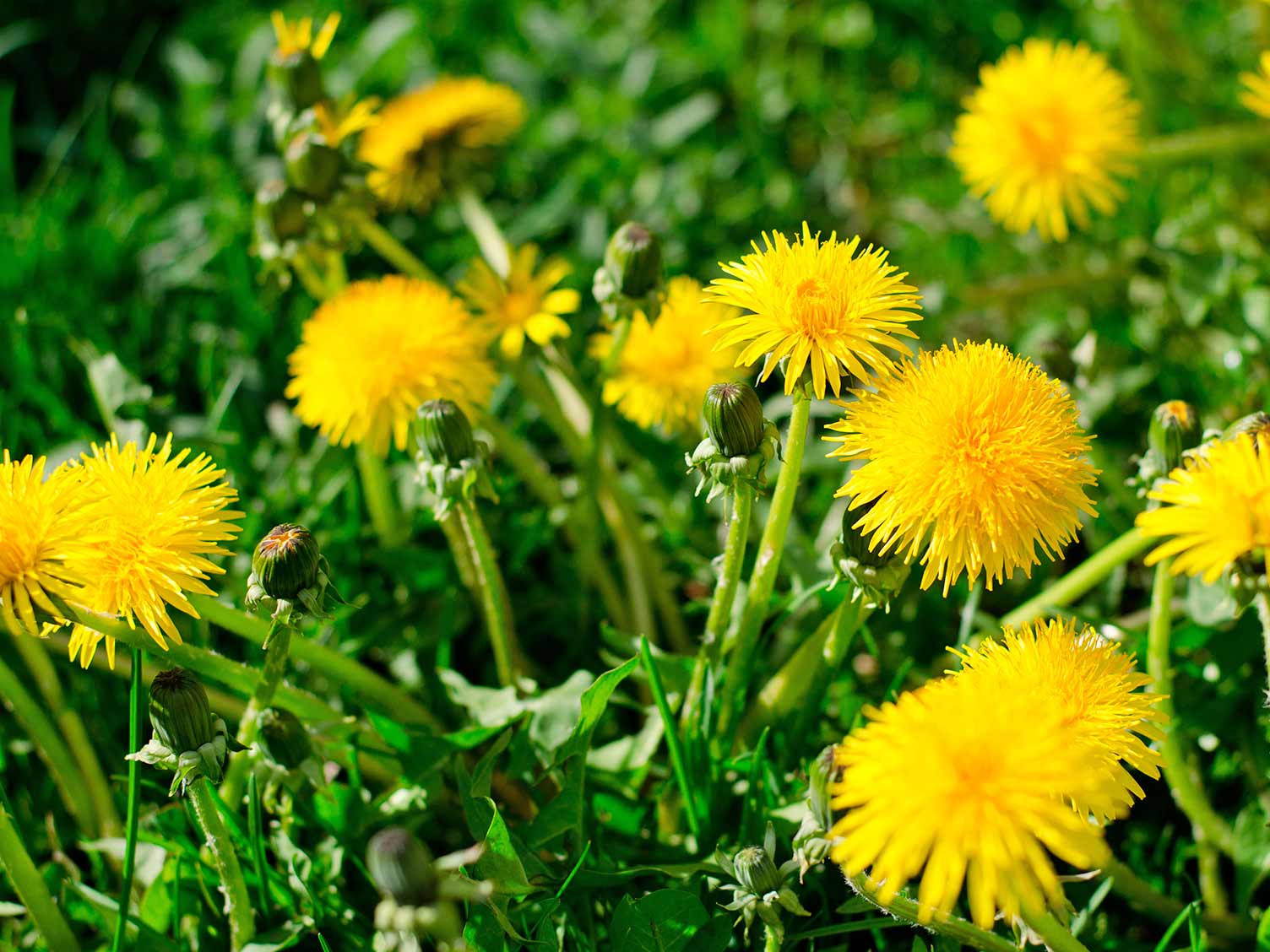
Dandelion is a very common perennial wildflower. You can recognise it from its teeth-shaped leaves, which form in a rosette, and multiple yellow flowers that grow from its centre. You most commonly see them from March to November. If large colonies of Dandelion obscure the growth of your lawn then simply using a daisy grubber or weed puller can help keep numbers under control.
Creeping buttercup
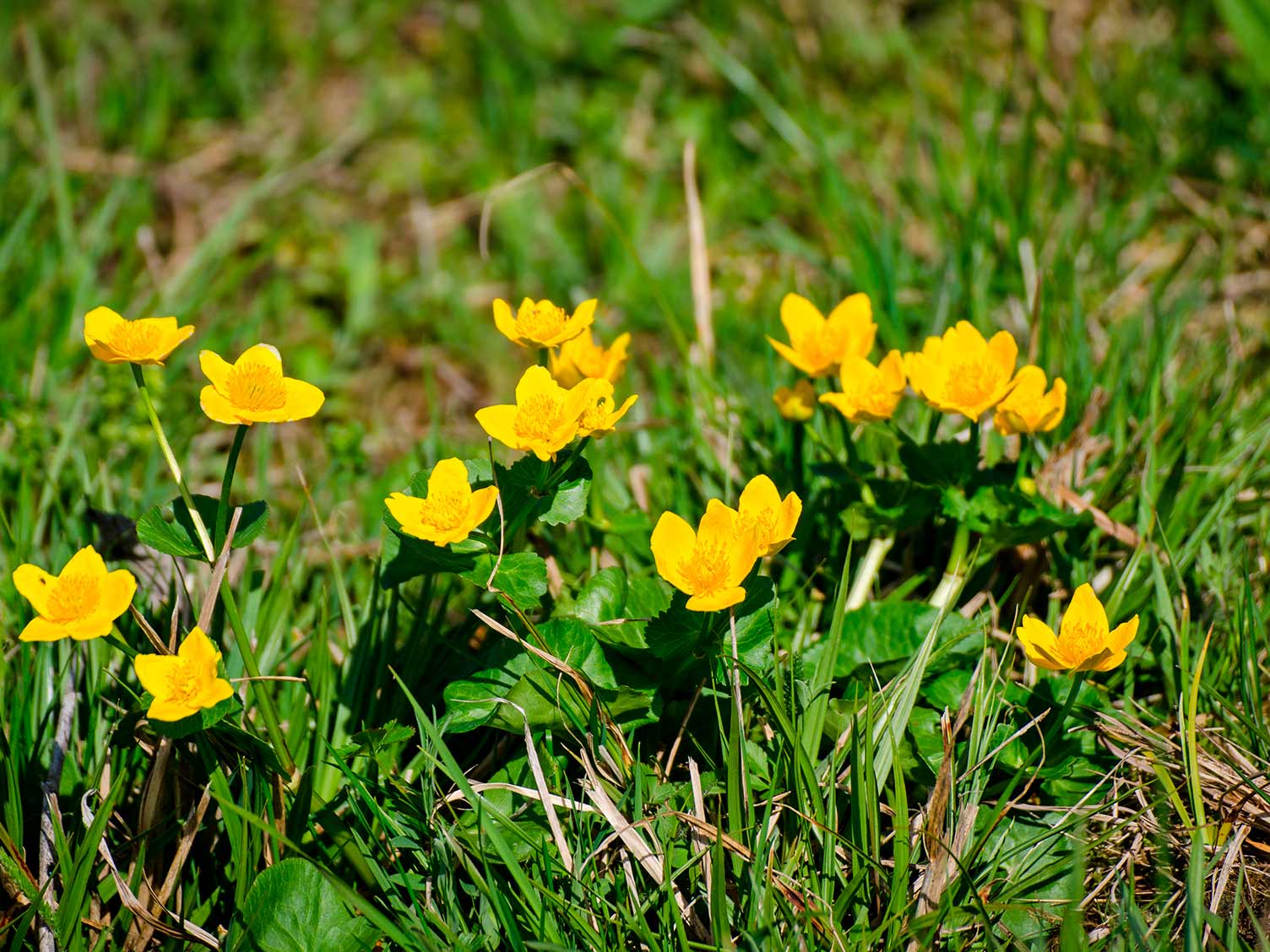
Creeping buttercup is one of the most common lawn weeds in the UK, and you can find it in bloom from mid-spring to late summer. You can recognise it by its divided leaves, creeping stem and bright yellow flowers, each with between 6-9 petals. If you have a lawn in full sun Buttercups can colonise quickly, feeding your grass will help keep numbers under control.
White clover
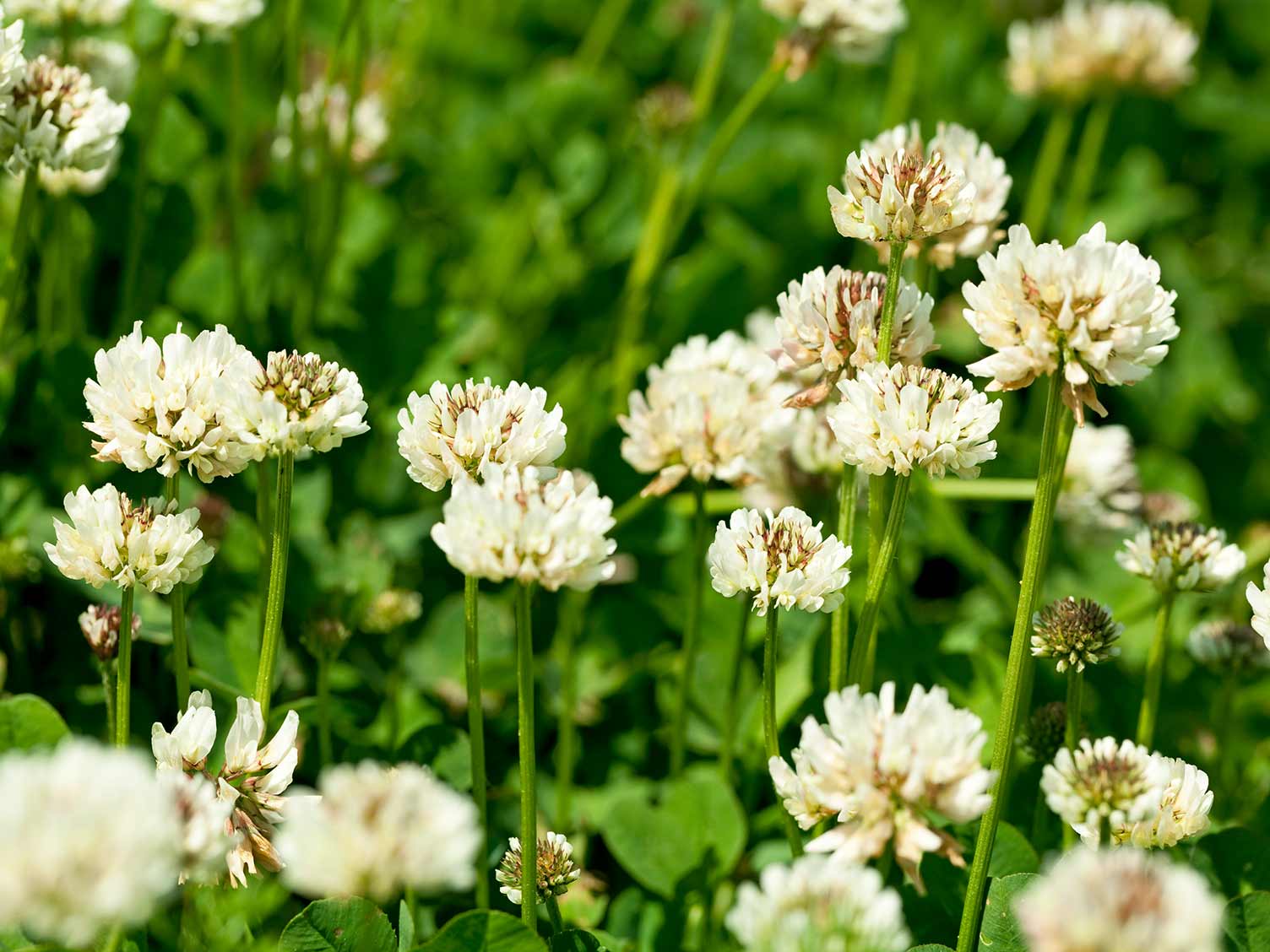
White clover is a very common and easy to recognise weed that’s commonly found in lawns and turf. It’s a perennial weed and grows low to the ground with creeping runners. You’ll recognise it by its distinctive three-leaf shape and small white flowers. Bees love clover and clover is well know to fix nitrogen (the food that grass loves). Clover thrives during extended dry periods. If patches become too big, use a rake to remove surplus growth to keep under control.
Daisy
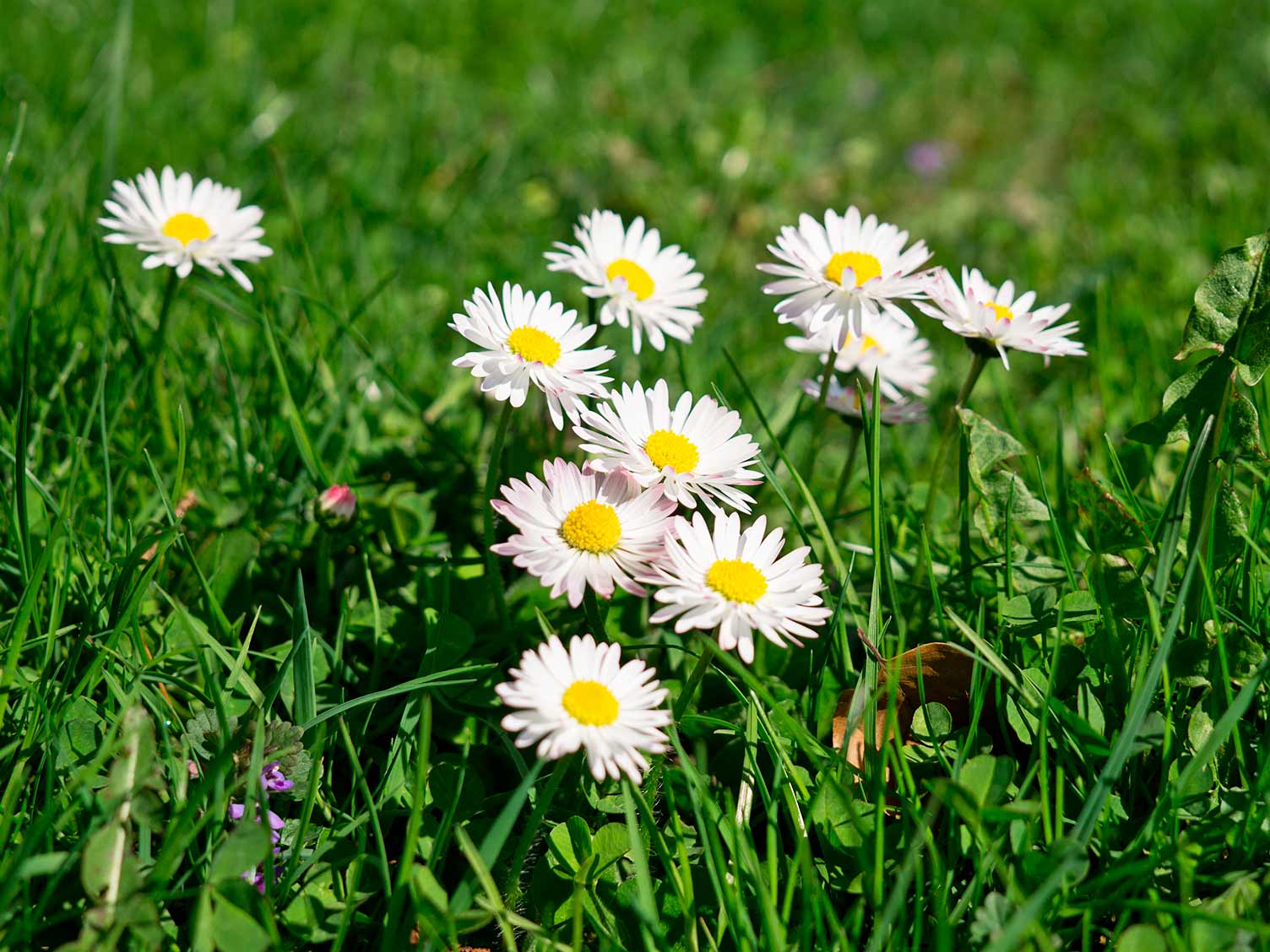
Daisy is one of the easiest weeds to recognise when its flowers are in bloom in spring to early autumn. They have white petals and a yellowish centre. They can be found in nearly any soil condition and often grow very close to the ground, even on closely mowed lawns. If patches become too big, use a Daisy Grubber to control the growth.
Plantain
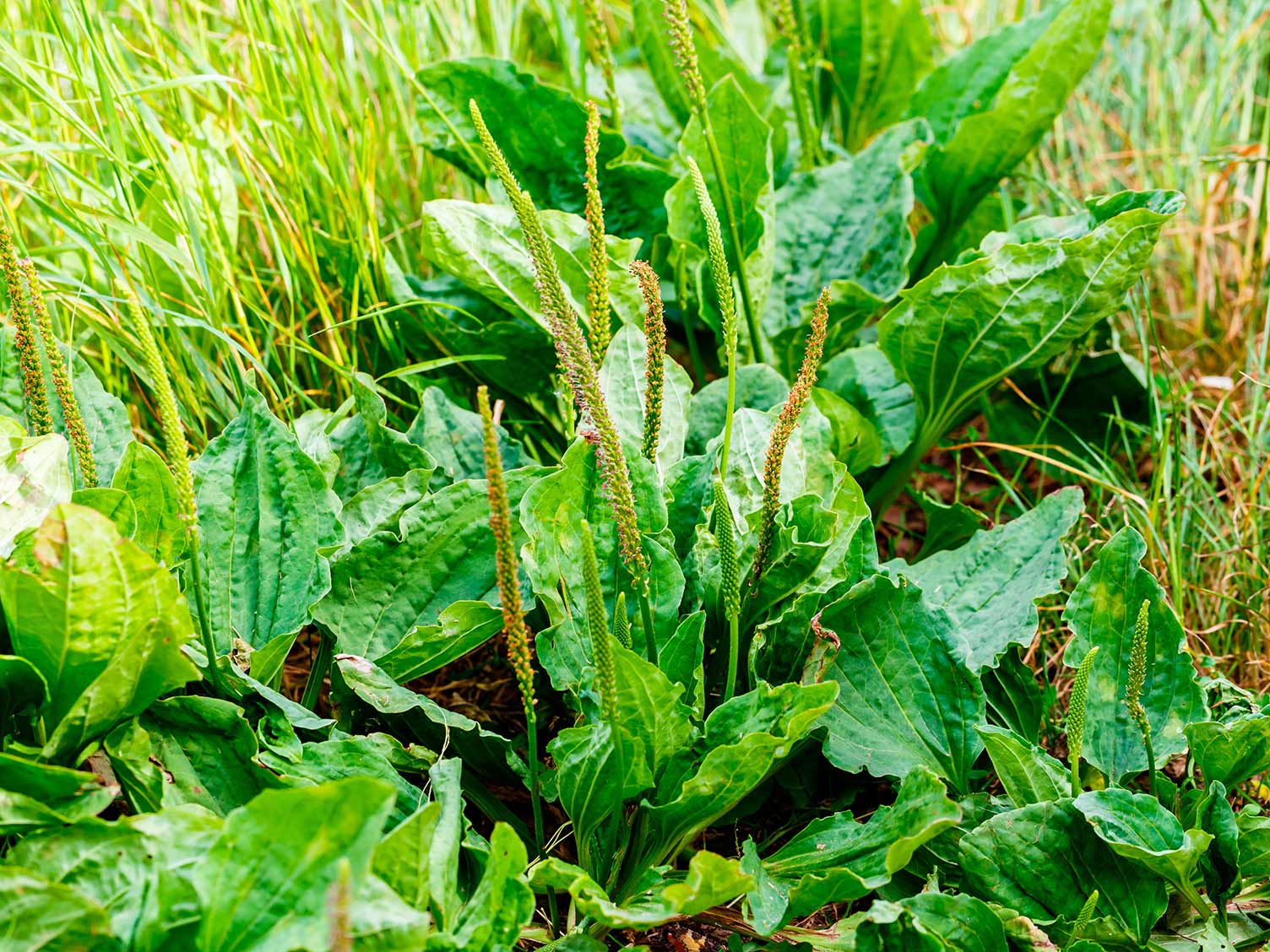
Ribwort plantain or narrow leaf plantain is a very common weed in the UK and can survive in drought conditions thanks to its large, fibrous root system. You can identify this weed by its long, narrow leaf, which are also oval in shape. It flowers from late spring to late autumn, with short flowers that grow in a spike shape at the top of a long stem. Usually associated with lawns that have been neglected. A regular maintenance programme will keep numbers in check.
Common mouse-ear
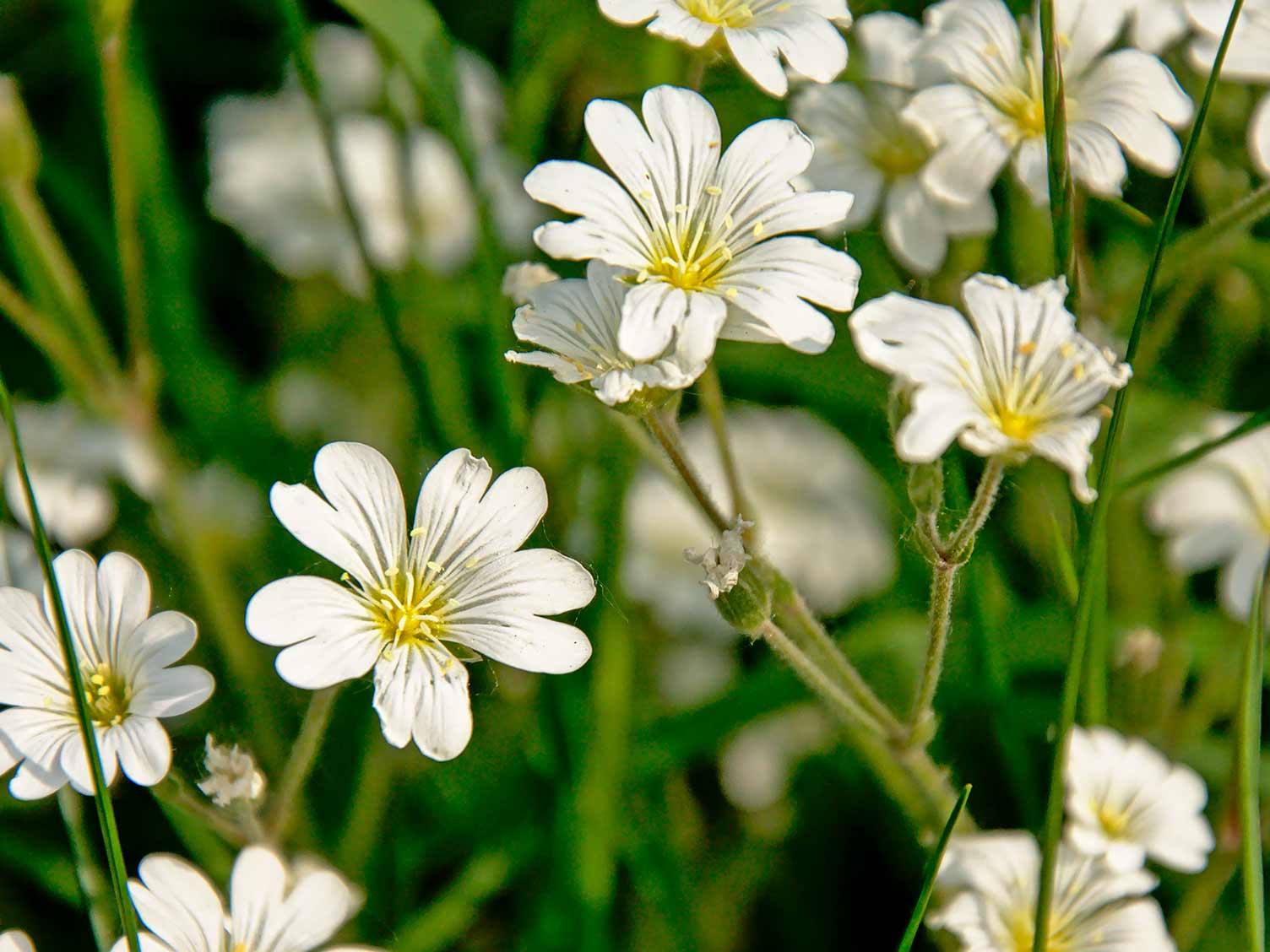
Common Mouse Ear is another perennial weed that you will commonly see growing unwanted on lawns around the UK. You’ll recognise it from its dark green leaves, which have small hairs all over them. They have small, upright white flowers and appear from late spring through to autumn. Raking in early to mid spring will help control numbers.
Medick
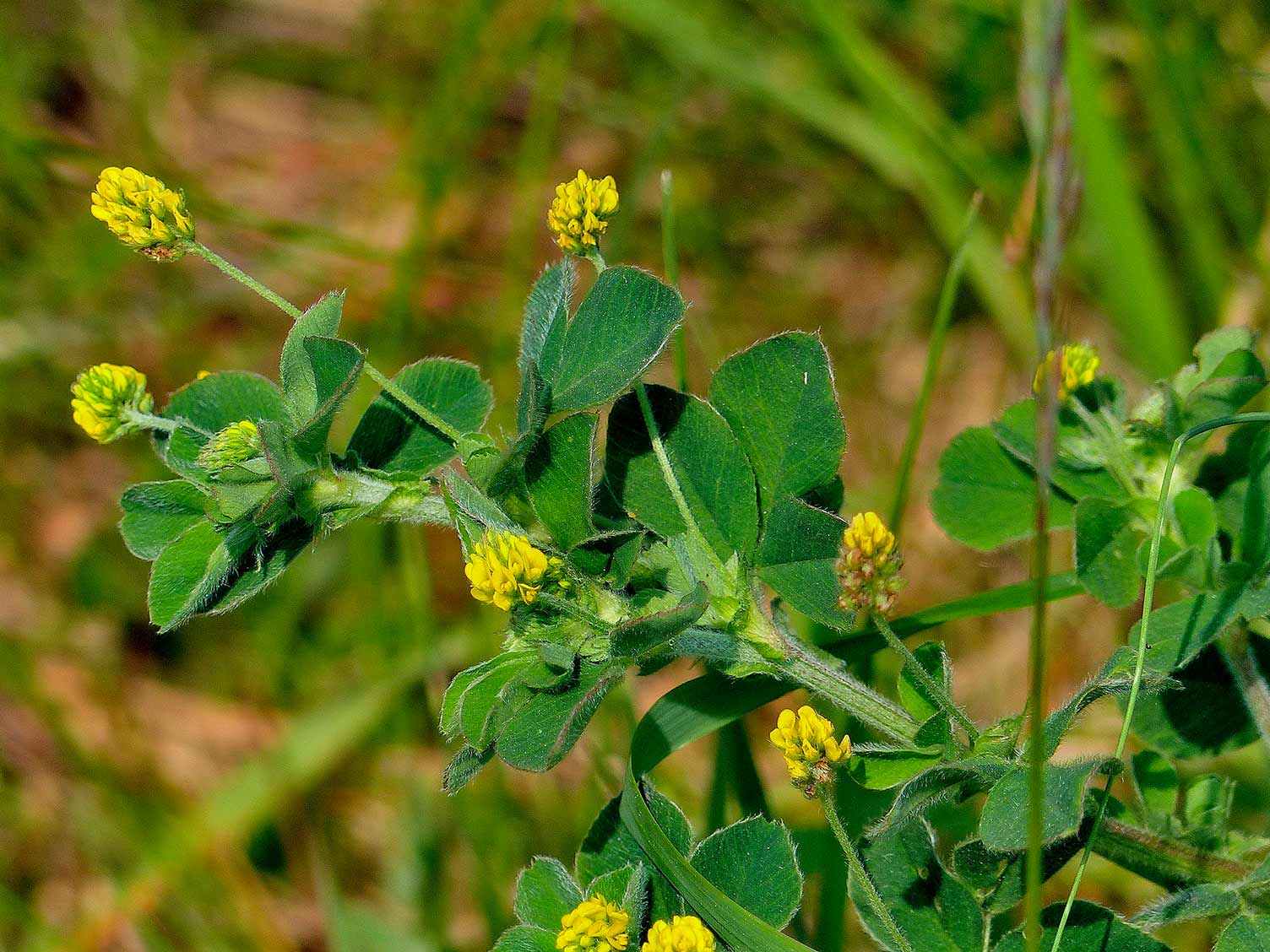
Medick or black medick can be both an annual and perennial weed and is most often found in neglected lawns with dry soil. They are very similar in appearance to Lesser Trefoil, and people often confuse the two; one of the simplest ways to distinguish medick is by its seed pods, which turn black at the end of the season. Raking in early to mid spring will help control numbers.
Bird’s foot trefoil
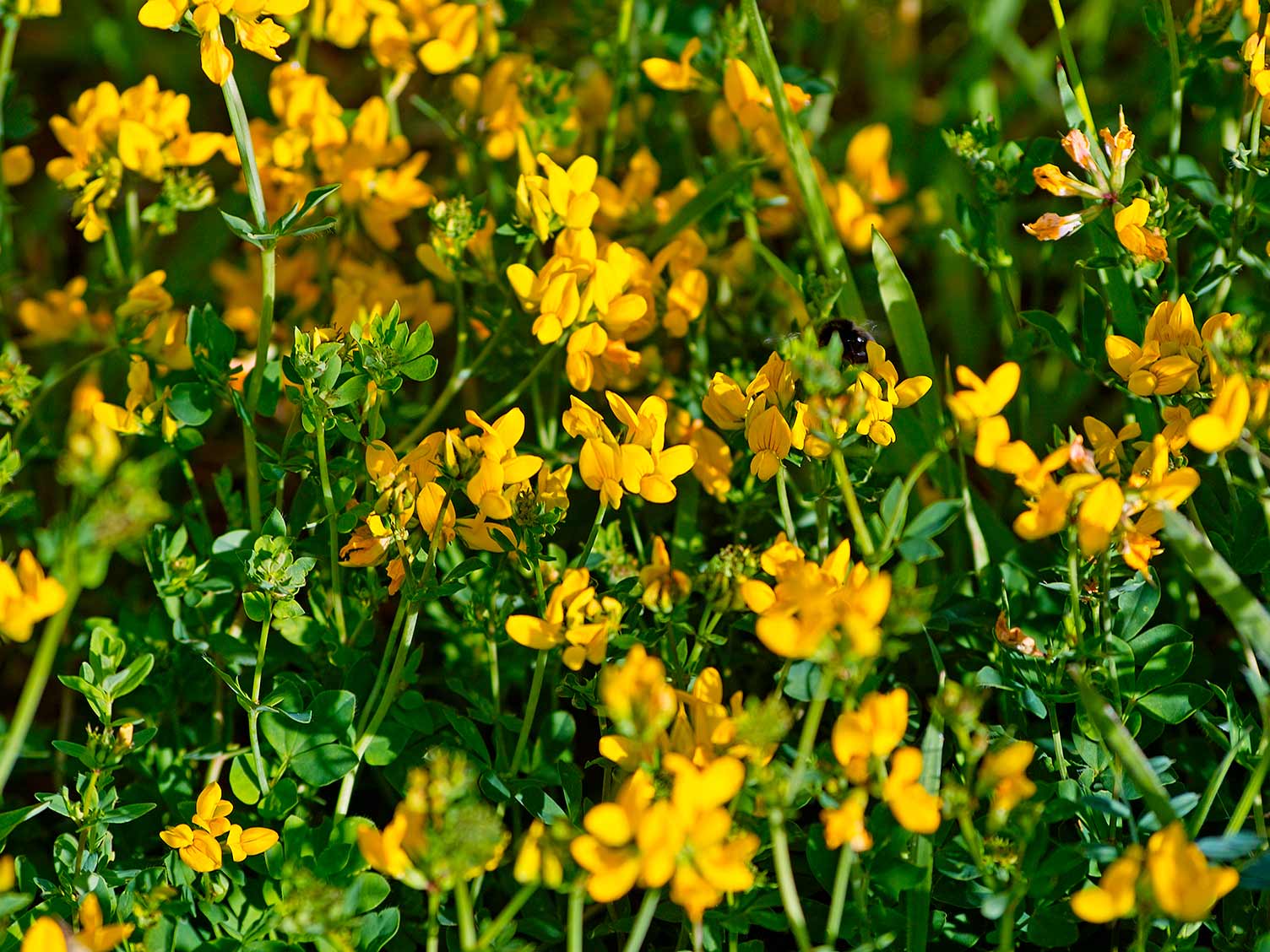
Bird’s foot trefoil is a member of the clover family, and can sometimes be confused for white clover when it’s first growing because of its similarities. You’ll know bird’s foot trefoil by its 3-leaflets shape, which grows on a short stalk, followed by three more leaflets at the base of the stalk. Flowers are bright yellow and look similar to honeysuckle. This weed grows in a variety of soils but prefers dry soils that are non-acidic. Raking in early to mid spring will help control numbers.
